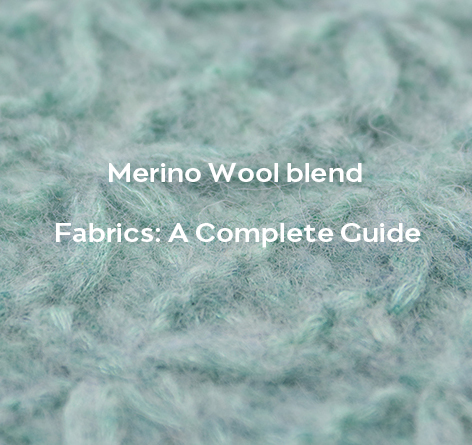With the increasing demand for comfort and quality, humanized design is becoming more and more important in the knitwear industry. Traditional design focuses on appearance and fashion sense, while humane design pays more attention to the wearer’s comfort and experience. It takes into account ergonomic principles to ensure the fit of the garment with the body, reducing discomfort and stress when wearing it. In addition, humane design also includes the selection and handling of materials to ensure the softness, breathability and durability of the product. Through humanized design, knitwear can better meet the needs of consumers, improve their comfort and functionality, thus enhancing the competitiveness of products and market share.
The ergonomic factors considered in knitwear design were analyzed
In knitwear design, it is crucial to ensure that the clothing size matches the body size. A suitable size ensures that the clothing fits the body, thus providing a better wearing experience and comfort. In order to achieve this goal, designers usually conduct detailed body size surveys and analyses to understand the body characteristics and size distribution of different populations. This may involve surveying people of different ages, genders, body types and geographies in order to design knitwear that can meet diverse needs.
Once the necessary data is obtained, the designer can begin to develop the corresponding size standards and size tables. This needs to take into account the sizing habits and cultural context of different regions to ensure that the product is suitable on a global scale. In addition, the use of adjustable design elements, such as adjustable belts, zippers and buttons, can also increase the flexibility of the product, making it easier to match different body sizes.
Through precise dimensional design, knitwear can better adapt to the curves and contours of the human body, reducing discomfort and movement restrictions caused by inappropriate size. This not only improves the comfort of the wearer, but also enhances the overall quality of the product and user satisfaction.
The structural design of the knitwear is essential to provide effective body posture support. Different knitting structures can affect the strength, flexibility and stability of clothing, thus affecting the posture and movement of the wearer. During the design process, with ergonomic considerations in mind, designers usually choose the right structural design to provide proper support and stability.
For example, in the design of sports clothing, a knitted structure with high elasticity is usually used to ensure that the clothing can be tightly fitted to the body and follow the movement of the body. At the same time, according to the movement characteristics of different parts, different structural designs may be used, such as strengthening the support structure of the shoulder and knee, in order to reduce the stress and damage risk during exercise.
In addition, the structural design of knitwear can also affect the ventilation and breathability of clothing. Through reasonable design of ventilation holes and sweating areas, the comfort of clothing can be effectively improved during wearing, and sweat accumulation and skin discomfort can be reduced.
In general, the structural design of knitwear should fully take into account the wearer’s physical characteristics and posture needs to provide the best support and comfort. This requires designers to pay close attention to ergonomic principles during the design process and make comprehensive considerations in combination with actual needs to ensure that the final product can meet the needs and expectations of users.
The main factors of comfort of knitwear were analyzed
Material selection is one of the key factors affecting the comfort of knitwear. Different fiber materials have different properties and have different effects on comfort. For example, cotton knitwear is usually soft and breathable, has good moisture absorption and sweat wicking properties, and can keep the skin dry, so it is considered one of the more comfortable choices. Silk knitwear has excellent smooth touch and warmth retention, but its moisture absorption and perspiration ability is relatively poor, which may cause discomfort in hot weather. Although polyester fiber has good wear resistance and wrinkle resistance, its permeability is poor, easy to produce static electricity, which may cause skin discomfort.
In addition to the choice of a single material, the use of blended or composite materials is also an important strategy to improve the comfort of knitwear. For example, the combination of natural fibers and man-made fibers can combine the advantages of both, such as tencel cotton blended knitwear retains the soft and breathable characteristics of cotton knitwear, but also increases the smooth touch and wrinkle resistance of tencel, improving comfort.
The stitching process is also crucial to the comfort of the knitwear. The quality stitching process ensures the comfort and durability of the knitwear during wearing. Proper stitch, proper stretch and flat seam are one of the key factors to ensure the comfort of knitwear. The fine stitching process reduces internal friction and roughness, making the fabric softer and more comfortable when it comes into contact with the skin. In addition, the appropriate suture structure design can also reduce the sense of bondage of clothing on the body and improve wearing comfort.
The weight and texture of clothing directly affect the wearer’s feeling of comfort. Light and soft knitwear is easier to adapt to the movement of the human body, reducing the burden of the wearer, making the wearing process more relaxed and comfortable. In addition, the texture of clothing can also affect the feeling of wearing, such as rough texture may irritate the skin and cause discomfort. Therefore, when designing knitwear, it is necessary to consider the choice of light and soft materials, and maintain the softness of its texture through reasonable process treatment to improve wearing comfort.
Comfort directly affects the user’s experience and satisfaction with knitwear, and then affects the brand’s reputation and market competitiveness. In today’s competitive market environment, users have an increasing demand for comfort. Good comfort knitwear can not only enhance the user’s wearing experience, enhance user loyalty, but also attract more consumers and enhance the brand’s market competitiveness. Therefore, the comfort problem in knitwear design can not be ignored, the brand should take comfort as an important consideration in product design, through continuous innovation and improvement, improve the comfort of products, meet the needs of consumers, and win market share.




